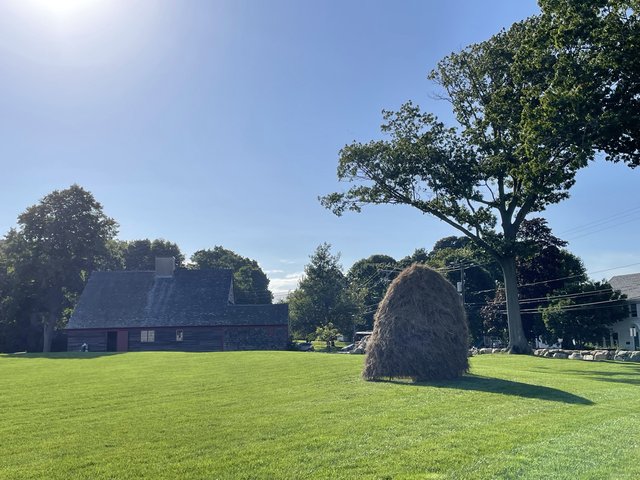Heart in the Haystack
Sept. 24, 2021 — Oct. 24, 2021

Heart in the Haystack
Pledges to plant native species
On view from September 24 – October 24, 2021
Thursdays - Saturdays from 10:00-5:00 pm and Sundays from 1:00-4:00 pm
Cape Ann Museum Green
13 Poplar Street, Gloucester, MA
Free and open to the public, registrations to visit CAM Green required. For questions or further details contact [email protected] or call 978-283-0455 x110.
The paintings of Martin Johnson Heade and Fitz Henry Lane allow us to imagine Cape Ann and costal New England from the perspective of a rural pastoral Colonial settlement. Historically, the salt marsh haystack was a structure made to store nutritious food for working animals. These iconic haystacks depicted in paintings by these two artists and others are beautiful beacons of function made up of saltmeadow cordgrass (spartina patens). This plant was a critical crop in these artists’ lifetime and vitally important now in capturing water and providing a buffer to our increasingly aggressive weather patterns and rising seas.
Heart in the Haystack is presented as part of the Museum’s continuing conversation with artists whose work centers around the Great Marsh, which began with Maia Mattson’s outdoor installation Weaving the Great Marsh and Dorothy Kerper Monnelly, Brad Story, and the Great Marsh
Artist Statement: Kim Radochia
Here on the Cape Ann Museum Green the historical form of the haystack is reinterpreted as an interactive experience to learn about our local ecology through plants. Cordgrass is just one of the many native plants that are part of the interconnected web of what makes this environment along our coast healthy and unique. Native plants, like the ones in the index below have been here for thousands of years and are best suited to provide the most nutrients for insects and birds. Without these creatures and their ability to migrate, nest, propagate, and germinate the patterns and structures of nature will degrade, sending the balance of Earth’s systems into decline. Here I ask for your help in learning about these special plants and I ask that you make a pledge to plant one of these plants in the ground. In the act of hanging a stick from a native tree here within this haystack I am inviting you to become part of this project. By planting native species and converting lawns and properties to habitat, we are adding places for our local creatures to thrive and taking environmental stewardship into our own hands. Small steps you take can aggregate and make a big difference in the health of our future planet.